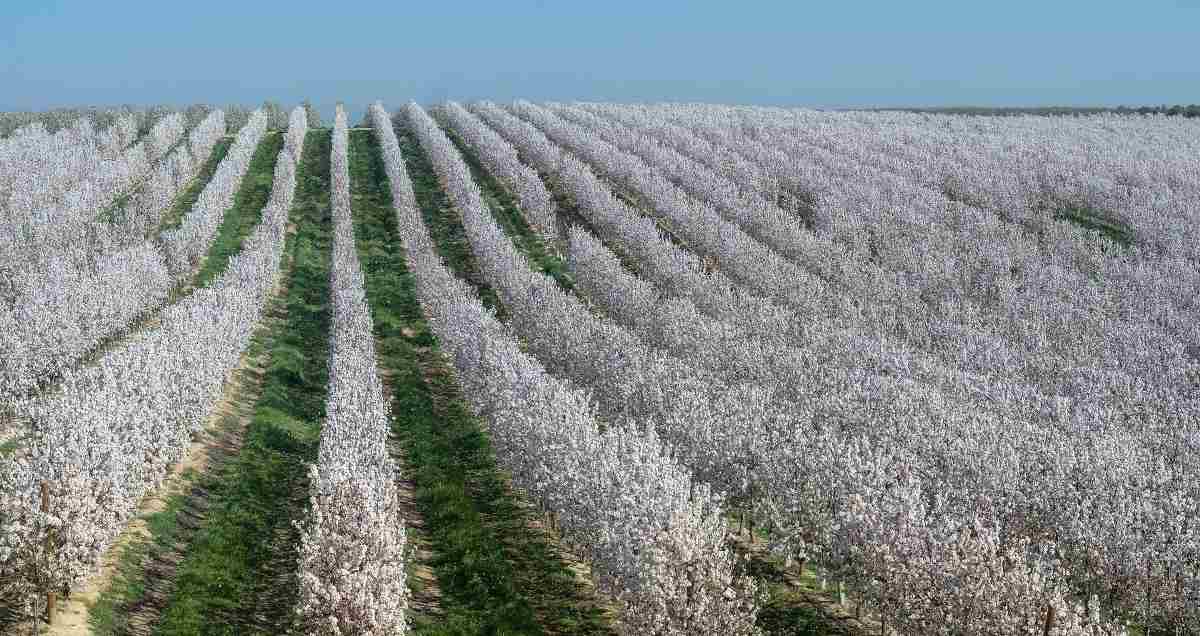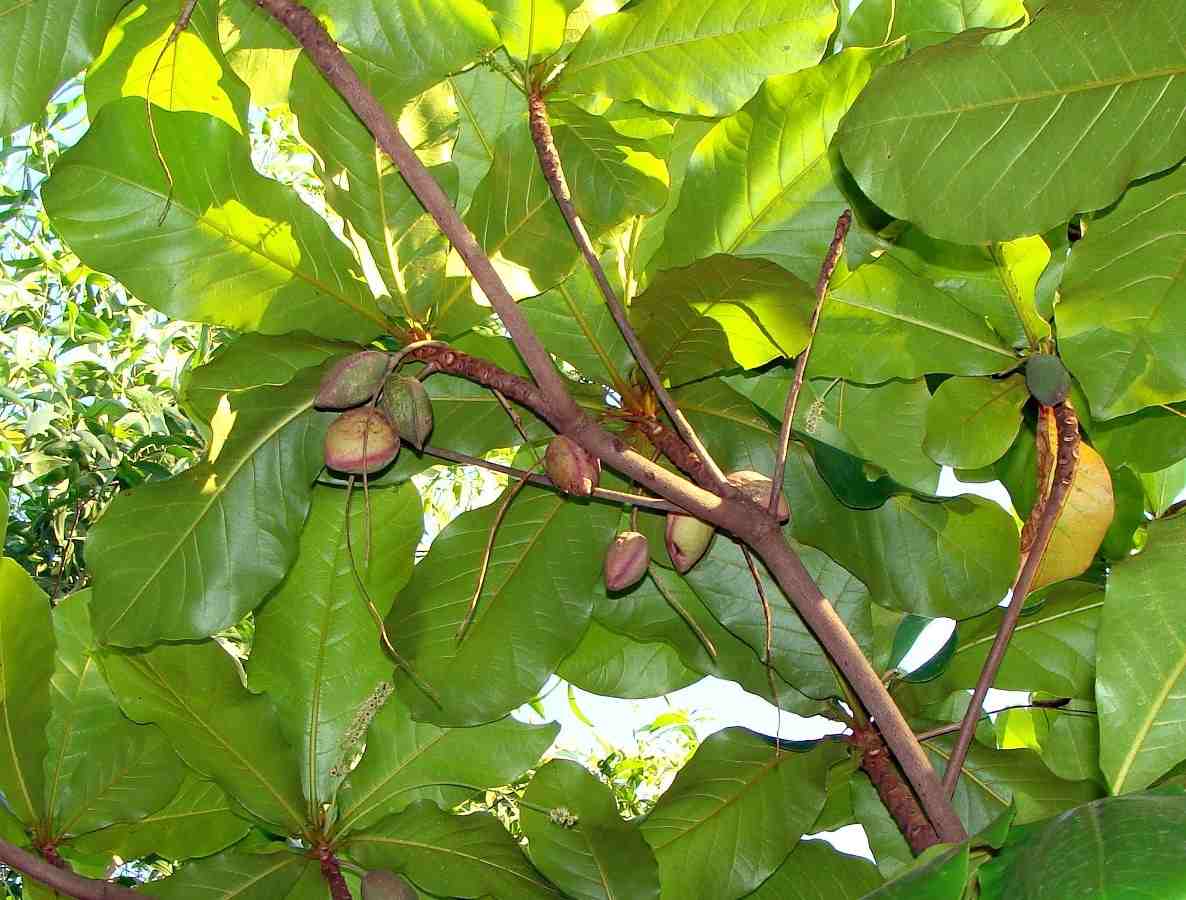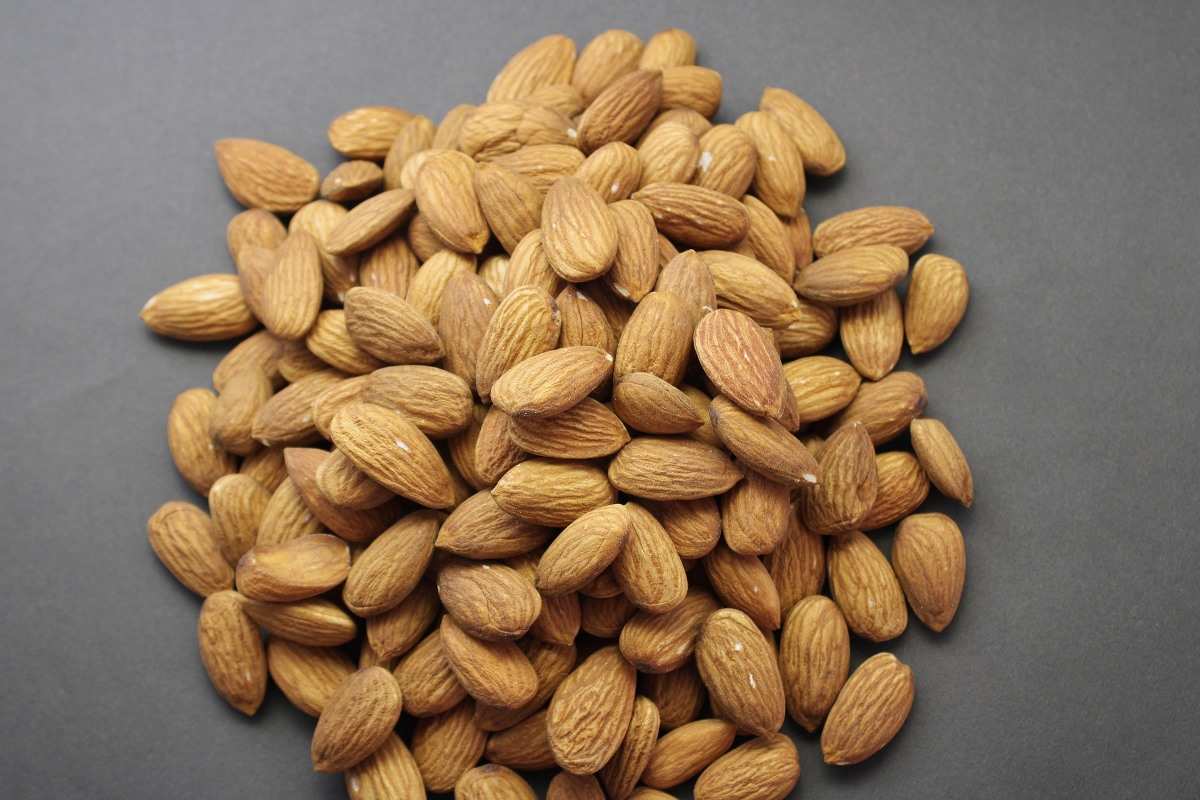Introduction to Organic Almond Farming, Cultivation Practices in India
The Almond tree is a deciduous tree in the family Rosaceae. Almond fruits are rich in fats and minerals and are consumed in different ways. Also, they are used as an ingredient in cosmetic products and medicines. Almond trees are deciduous with a hardy dormancy. Almonds possess economic, medicinal, and nutritional benefits and are consumed in every country. The Almond tree is a small deciduous, the adult plant achieves a height of about 4 to 10 meters. The first young small branch of the new plant is green in color, but after exposure to the sunlight, it becomes purplish and appears gray after the second year of tree growth. The price for organically-grown Almonds can be double the price for conventionally-grown Almonds though production costs can double in organic production versus conventional production.
A Step-By-Step Guide to Organic Almond Farming, and Production
Organically grown products are the fastest-growing consumer trend in the marketplace as new products are developed and retailers seek to provide organic products for their private labels. Almonds are rich in vitamin E, monounsaturated fat, fiber, and biotin. They also have phytonutrients, as well as minerals like calcium, phosphorus, and magnesium. The Almond tree is a Mediterranean crop and it can withstand the high-temperature levels during the summer and the intense winter cold. It can survive long periods of drought and be cultivated on poor land.

Some of the main characteristics of organic Almonds farming;
- Instead of eliminating the herbs that grow naturally, let’s keep the vegetal cover of the soil to avoid erosion, which keeps the substrate moisture level, increases the contribution of organic matter when the herb plant is incorporated into the soil, and which help to fight pests in a natural way (auxiliary insects, reptiles, and birds, etc.).
- To substitute chemical fertilizers for the incorporation into the soil of organic fertilizers, both of animal manure, and vegetable (plant covers, herbs, crop residues).
Soil Preparation in Organic Almond Farming
A sunny area with well-drained soil is required for the cultivation of Almond trees. The pH level of soil should be between 6 to 7. But this pH level is also suitable for the growth of bacteria and nematodes. The presence of nematodes in the soil is harmful because of nematodes damage plant roots in Almonds. In the soil preparations, it is essential to test the soil; if nematodes are present in soil then soil fumigation is essential for killing nematodes. Soil should be turned over several times and allowed several layers to dry. It is not necessary to add several types of fertilizer in the soil while compost can be added to the soil to improve the amount of organic content in the soil. Soil rich in organic matter provides both proper moisture and aerations for plant roots. After turning over soil several times compost must be added in the soil (3 inches layer of compost), which help to prevent weed and some pest. During the first 2 years no further fertilizer is required but after 2-year nitrogen fertilizer should be is used.
The Almond tree can be grown in shallow soils, although it should always be borne in mind that, at a greater effective depth of the soil, we will have greater root development and higher availability of water and nutrients, considerably improving the vegetative and productive states of the Almond tree.
Land Preparation in the Organic Almond Farming
Before planting, the site must be properly selected and prepared. Select a site that will receive full sun for at least ¾ of the day. Though, gentle slopes with adjacent lower areas allow cold air to drain away from the planting on cold nights.
Usually, Almond trees grow quite large, and at the maturity stage, these trees occupy a space about 20 x 20 feet (10-12 foot radius from the trunk). Before planting, control perennial weeds around the planting site. Incorporate organic material into the planting location. Compost, potting soil, peat moss, or manure is suitable sources of organic matter. Then, work the amendment into the top 8 inches or so of the soil. Make sure the soil is well-drained, as Almond trees won’t tolerate wet soils.
Good land preparation yields higher fruits in organic Almond cultivation. Also, the cultivating soil has a fine tilth form and is free from weed and other materials. For bringing soil in fine tilth form, around 2 to 3 normal plowing with the local tractor is sufficient enough followed by a couple of harrowing. To increase the soil fertility, about 25 tonnes of well rotten FYM (farmyard manure) per hectare must be added at the time of last harrowing or ploughing. Also, level the soil well for the uniform growth of Almond trees. And, any soil deficiency must be corrected at the time of land preparation only.
Temperature Requirement for Organic Almond Farming
The Almond tree is cold-hardy fruit species. Freshly curdled fruits are the most frost-sensitive organs and these organs can be damaged at a temperature level slightly below 0ºC. The Almond trees have an earlier flowering, as will be seen later; there are great varietal differences for the flowering date. For this reason, in areas at risk of frost, special care should be taken in choosing late-flowering varieties. The temperature level between 15 and 30°C is required for Almond growth and the tree buds have a chilling requirement of below 7.2°C to break dormancy.
High temperatures can cause serious damage to Almond trees. Above 35ºC the photosynthetic activity is seriously reduced, entering the trees (especially when they are in dry conditions) in what is known as summer vegetative stop. Higher temperature levels above 40ºC can cause dehydration, necrosis and leaf fall, damage to the fruit, and wood burns.
How to Propagate Almond Trees
Almond trees are commonly propagated by budding. Dormant wood is collected in the winter season when the trees are dormant and stored until spring. The bud is carefully taken from a parent with desirable characteristics and cultivated to produce a new Almond tree. Also, Almond trees may be propagated by grafting. Cuttings are taken from trees during dormancy and grafted to a suitable rootstock in the spring season.
- Types of Pesticides Used in Agriculture: A Beginner’s Guide
- Economical Aquaculture: A Guide to Low-Budget Fish Farming
- 15 Common Planting Errors That Can Doom Your Fruit Trees
- How to Make Houseplants Bushy: Effective Tips and Ideas
- Innovative Strategies for Boosting Coconut Pollination and Yield
- Pollination Strategies for Maximum Pumpkin Yield

Generally, the Almond tree is propagated by budding. Professional Almond tree growers benefit from a tree that is a combination of two different plant tissues like the rootstock and the scion. The rootstock is the lower part of the Almond tree and produces the root system. The rootstock could not be an Almond tree, as peach rootstocks are often used nowadays. The rootstock’s resistance to soil-borne diseases such as Verticillium wilt is extremely important. On the other hand, the scion produces the upper part of the Almond tree and of course determines the fruit’s characteristics. Therefore, the Almond tree is propagated by T budding over seedlings or clones aged 1 to 2 years. T budding can be performed from early spring to autumn, but most farmers proceed in this operation during the summer season.
The rootstocks that are used are peach and hybrid seedlings. Farmers use seeds of bitter Almonds or various commercial varieties of Almond. Though, seedlings are used as rootstocks in well-irrigated intensive commercial orchards. The average Almond tree with peach rootstock grows quickly at an early age, comes into fruition much earlier, and is generally more productive during the first two decades than the average tree with Almond rootstock. Almond seedlings are used as rootstocks in non-irrigated orchards, as they are more drought-resistant than peach seedlings.
Plantation and Spacing in Organic Almond Farming
For organic Almond farming, the budded plants must be planted in a square or hexagonal system of plantation must be followed by keeping a distance of about 6 meters apart from each other depending on the soil type. For planting with a medium-high density system, the spacing must be 4.0 meters by 4.0 meters, and for high-density plantation; the spacing must be 3.5 meters to 2.5 meters.
Before plantation, prepare pits having dimensions 3 feet each must be dug up between September to October for planting in Feb and March. Make sure they use bamboo sticks to provide support to protect them from heavy winds and can grow straight. Try to plant pollinizer cultivar in every 3rd to 4th row so that at the time of blooming, the pollinizer can coincide well with the main varieties. However, it is a good idea to place 8 to 10 honey bee hives for good pollination at the time of the flowering stage.
During the Almond planting stage, our growers top-dress the soil with a generous mulch of well-rotted organic matter. Keeping trees dry under sheeting prevents leaf curl and rotting fruit. At harvest, Almond nuts are knocked down, peeled, and then dried. A healthy Almond tree will bear for 10 to 15 years or more.
The Cost of Organic Almond

The cost of Organic Almond is approximately ₹ 980/ Kg to ₹ 1,200/ Kg
Planting Design and Pruning in Organic Almond Farming
Almond trees are trained to an open center shape in the first year. Young trees are headed at 1 meter to allow adequate room for trunk shaker attachment. Almond trees must be pruned in the first year and every subsequent year to help thin the canopy and prevent disease. The first pruning of Almond trees is critical in establishing the canopy shape. In the second year, two scaffolds (lateral branches which produce to form a Y with the primary limbs) must be selected and the rest removed.
At maturity, tree pruning consists of water-sprout removal, removal of dead and interfering branches, and limb thinning. Little pruning is needed so many fruiting points are needed for cropping, and vigor is low in mature trees. In practice, Almond trees can be pruned every other year with no loss of productivity. Under proper management, trees have many 38-50 cm long 1-year-old shoots. Then, these shoots will branch, grow spurs, and become fruiting wood in subsequent years.
Fertilizer Requirement for Organic Almond Farming
Almond trees require a lot of energy and also have heavy nitrogen feeders. Young non-bearing trees produce 12 to 18 inches of new growth per year. Mature bearing trees produce 6 to 12 inches of new growth per year. Obtaining this kind of growth will need additions of fertilizer. Then, the rule of thumb is to apply 1 ounce of actual nitrogen to each tree per year of tree age, but not to exceed ½ pound of actual nitrogen per tree annually.
To calculate the amount of fertilizer to apply to the tree, divide the nitrogen needed, as per this rule, by the decimal fraction of nitrogen in the fertilizer. For example, a 3-year-old tree must receive 3 ounces of actual nitrogen. For calculating how much ammonium sulfate (21% nitrogen) to apply, divide 3 ounces by 0.21 for a total application of 14 ounces of fertilizer. Organic fertilization is one of the aspects to be improved in Almond cultivation.
Apply Liquid Organic Fertilizer to Almond Trees – Initially, use 1/2 gallon Natural Fertilizer and 1 quart to ½ gallon Natural Kelp in 50 to 75 gallons of water per acre. Carefully apply this mixture directly to leaves with a commercial sprayer at early leaf-out, and 10-14 days later. Apply the same application again postharvest in late summer, during active tree growth, or with any supplementary zinc and boron that may be required.
Irrigation Requirements in Organic Almond Farming
Irrigation is one of the most important operations and is critical for the success of Almond cultivation. The main goal is to help the soil maintain adequate moisture, making it available for the trees at any time during the growing season. However, over-irrigation must be avoided as it often leads to root rot.
Almond tree has great water needs in early spring, during the summer and sometimes during the first months of the autumn season. Low soil moisture at the beginning of the growing season is critical and results in a significant decrease in production. Watering the Almond trees during or just before harvesting creates many problems. Thus, most farmers stop irrigating the trees about 3 to 4 days before the beginning of harvest. Farmers irrigate lightly their trees immediately after harvest.
Pest Management in Organic Almond Farming
Almond trees are affected by several insect pests. These pests attack the Almond tree or kernel, reducing orchard vigor or yield. Pest pressure tends to be lower in Almond trees due to the protection of the kernel/seed from the environment by a shell and hull. Then, this provides an opportunity to grow Almonds organically or without the requirement of a large number of pesticides. Though, organic Almond farming is reliant on the use of cultivar selection or cultural practices to reduce insect infestation rates. Some cultural ways like good sanitation practices in the plantation, which include removing or shredding old debris, dried nuts from the previous year’s crop, and dead wood from the Almond trees. Organically approved pesticides are effective for some, but not all types of pests.
Integrated Pest Management (IPM) or biological control is used instead of pesticides to manage crop pests. Instead of synthetic fertilizers use composting, animal manures, organic fertilizers, and cover crops in Almond farming. While there are different methods of organically producing crops, the main idea behind organic farming is ‘zero impact’ on the environment.
Weed control is one example of the challenges facing organic Almond growers. Then, the general use of pesticides cannot be used on organic farms; special consideration needs to give to eliminating any weed seeds before the Almond trees are even planted. This can be done with deep cultivation or with solarization means spreading black or clear plastic over an entire planting area for several months. Both methods will help to prevent weeds germination, yet there are other factors that farmers need to consider. Normally, the spacing between the trees and proper irrigation must be different on organic cultivation, since in-season weed management involves between-row cultivation with a tractor, hand weeding, or flaming. Though there are several organically approved herbicides, most do not control all weeds. Organic farmers need to take extra measures to avoid weed competition with growing Almond trees and all these extra steps increase costs for organic Almond farmers.
There are a few bugs that eat Almonds, or rather more commonly the tree’s foliage. But, large colonies of these can decimate a nut harvest but are not usually a huge problem in trees. Aphids and scales, tiny sap-sucking vampires, feed in colonies and also cause yellow leaf spots, deformity in leaves and flowers. The presence of these insects leads to a higher incidence of ants. These insects exude honeydew upon which sooty mold grows, but also it attracts ants. To rid the Almond tree of scales and aphids, try a hard spray from the garden hose to dislodge them. Then, spray the Almond tree with insecticidal soap or horticultural oil. When there are only a few of these on the tree, treating these pests on Almond trees requires handpicking and disposing of them. For larger infestations, prune out heavily infested twigs and tree branches and destroy them.
Leaf roller larvae have green bodies with black color heads. They feed on tree buds just as they are opening. Usually, the population of leaf rollers is small and can be left alone, but if there is a large population, Bt (Bacillus thuringiensis) is often helpful.
Pacific, two-spotted, or strawberry spider mites are tiny insects that spin minute webs. Also, they suck on the leaves of the tree, resulting in yellowing and premature leaf drop. Spider mites thrive in dry and dusty conditions. To foil spider mites, keep the Almond tree consistently watered and the surrounding area damp. Also, wash the spider mites off the foliage. For heavy infestations in Almond trees, use an insecticidal soap or horticultural oil.
You should not miss this: Organic Bitter Gourd Farming.
When and How to Harvest Almonds
Almond fruits start to ripen when their hull begins to split. In most countries, some farmers harvest Almonds by hand. The Almond harvesting occurs after the hulls split and the shell becomes dry and brown. Normally, Almond trees need 180 to 240 days for nuts to mature.
Harvest Almond fruits occur between February and April when the nut is at an acceptable moisture level. The mechanical harvesting process requires orchard floors to be clear of large weeds and swept of all foreign material. Shakers are used to vibrate the Almond tree trunk, so the fruit (hull, shell, and nut) falls to the orchard floor. After the drying process, they are swept into rows and picked up ready for storage.